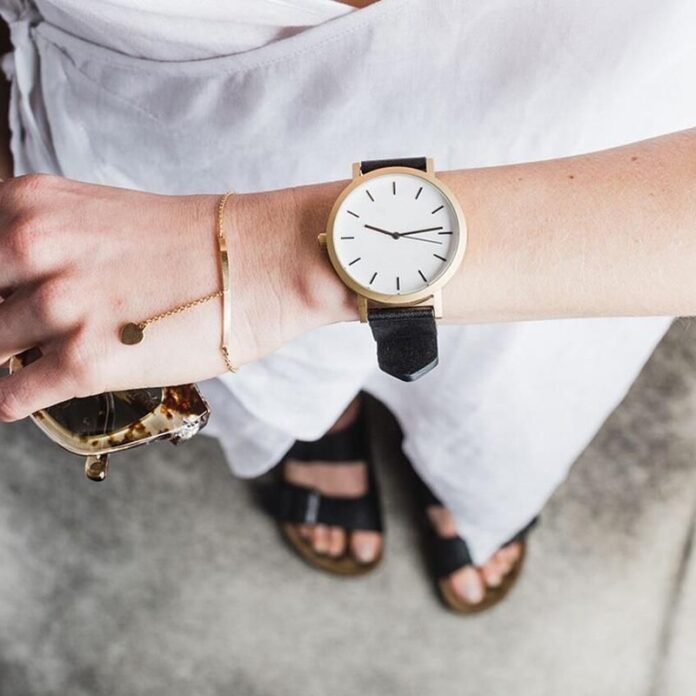Finding the perfect watch that works for both your Tuesday morning meeting and Saturday night dinner can feel impossible sometimes. Watches for women have evolved way beyond simple time-telling accessories – they’re now sophisticated pieces that need to balance technical functionality with style versatility. Market research shows that 73% of women consider a watch their most important daily accessory, ranking it higher than jewelry or handbags in terms of both practical value and personal expression.
Size and Proportion Guidelines That Actually Work
The whole “women should wear small watches” rule is pretty outdated. Your wrist size and personal style matter way more than gender-based sizing suggestions. A petite woman can absolutely rock a 40mm watch if she likes the look, while someone with larger wrists might prefer a delicate 28mm piece for certain occasions.
What does matter is case thickness. Watches thicker than 12mm can look chunky on most women’s wrists, regardless of the diameter. Ultra-thin movements, usually around 6-8mm thick, create a more elegant silhouette that works well under dress shirts or formal wear.
Lug-to-lug measurement is something most people ignore but shouldn’t. This is the distance from the top to bottom of where the strap attaches. If this measurement is longer than your wrist is wide, the watch will hang over the edges and look oversized no matter what the case diameter says.
Band width also affects how proportional a watch looks. Most women’s watches use 12-18mm bands, but going wider can create a more modern, substantial look if that matches your style. The key is making sure the band width balances with the case size.
Movement Types for Different Lifestyle Needs
Quartz movements are honestly the most practical choice for most people. They’re accurate to within seconds per month, require minimal maintenance, and work reliably in all conditions. Swiss quartz movements from companies like ETA or Ronda offer the reliability of quartz with better build quality than basic battery movements.
Automatic movements bring a different kind of elegance – the smooth sweep of the second hand and the knowledge that tiny gears and springs are powering your watch. But they need regular wear or a watch winder to keep running, and they’re less accurate than quartz, typically gaining or losing 10-20 seconds per day.
Solar-powered movements have gotten really impressive lately. Citizen’s Eco-Drive technology can run for months on a single charge and never needs battery replacement. For someone who wants the convenience of quartz without thinking about battery changes, solar is a smart middle ground.
Smartwatch functionality is becoming more elegant too. Traditional watch brands like TAG Heuer and Frederique Constant now make hybrid watches that look completely analog but include fitness tracking and notification features.
Material Combinations That Stay Timeless
Stainless steel remains the most versatile choice because it works with gold, silver, or rose gold jewelry. Brushed steel finishes hide scratches better than polished surfaces, which is practical for daily wear. Two-tone combinations with gold accents add warmth without the full commitment of solid gold.
Solid gold watches are beautiful but require more thought about when to wear them. Yellow gold works best with warm-toned outfits and gold jewelry, while white gold or platinum blends more neutrally with silver accessories. Rose gold has become really popular because it complements most skin tones.
Ceramic cases offer scratch resistance that’s practically unmatched, but they can shatter if dropped on hard surfaces. The trade-off might be worth it if you’re hard on accessories and want something that maintains its appearance long-term.
Strap and Bracelet Versatility
Metal bracelets create the most formal look and work well in professional settings. They’re also the most durable option for daily wear. Quality bracelets have solid links and smooth operation – you shouldn’t feel any rough spots when the bracelet flexes.
Leather straps instantly make any watch more elegant and refined. Alligator or crocodile leather costs more but ages beautifully and develops character over time. Quick-release pins make it easy to swap between different leather colors to match various outfits.
NATO or fabric straps might seem too casual, but they actually work well with small, elegant watches for weekend wear. A thin NATO strap in navy or gray can make a dress watch look more approachable while maintaining sophistication.
